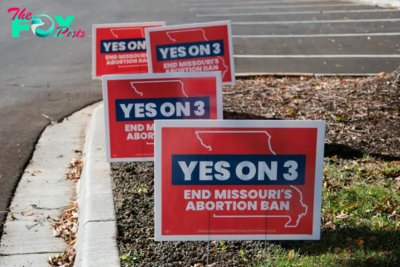Politics
School boards, long locally focused and nonpartisan, get dragged into the national political culture wars
In more than 90% of U.S. public school districts, school board elections are nonpartisan and have been for centuries. But that long tradition may well be changing – and putting at risk the quality of the country’s Education system by introducing divisive national political issues into the process by which a local community governs itself.
At present, nine states have passed legislation that enables school board races to be partisan. Four states provide for board elections that have partisan affiliations listed on the ballot; another five states permit districts to choose nonpartisan or partisan races. Bills introduced in six states in 2023 would require or permit school board candidates to declare party affiliations on the ballot.
In 2024, lawmakers in Iowa, New Hampshire and Arizona introduced similar bills. Neither Iowa’s nor New Hampshire’s bill has yet been voted on, and Arizona’s bill was vetoed by the governor. Floridians will decide on partisan school board elections at the ballot box in November 2024.
The sponsor of the 2023 bill in Ohio, which has not yet passed, said partisan elections provide voters with better “information about candidate platforms.”
As a former school board member in Ohio and a scholar of educational leadership, I see this shift having the potential to disrupt the important work of nonpartisan school boards in communities across the nation.

Party membership as shorthand
Sponsors of bills proposing partisan school board elections argue that these changes will result in more voter interest and informed participation in board elections. But research indicates the real effect may be less about public participation and more about partisan conflict.
In most states, school board races are held “off cycle,” meaning not in conjunction with federal elections, when there’s less competition or voter interest — 53% of the races in 2023 were uncontested, and low turnout is the norm.
Since the COVID-19 pandemic, the nation has paid more attention to the work of public school boards. The result has been that local school board elections more frequently involve donors and educational issues more national than local in their scope.
A study of five urban districts around the nation analyzed school board elections and donation patterns starting in the 2010s. It found that in the 2012 and 2013 election cycles, large donations from people outside the school district comprised 44% of all funds contributed by individuals in those elections. Most of these donors were founders or board members of educational organizations, including charter school networks, which often compete with public schools.
In another sign of the nationalization of school board races, governors have more frequently begun endorsing school board candidates. In 2023, 31 state executive officials or candidates made endorsements for school board candidates.
A recent study of 2022 Wisconsin school board elections adds further evidence that national party conflicts can influence school board races. Researchers examined school board races in districts where one or more candidates campaigned around national culture-war themes like teaching about race and racism, responding to the COVID-19 pandemic, and sex and gender issues – including curriculum materials, sports teams and bathrooms.
The study found that areas with larger shares of Donald Trump voters in the 2020 presidential election were more likely to have a school board election with at least one candidate declaring a public position on one of these key divisive national issues.
The study also demonstrated that candidates who focused on divisive issues were more likely to win races in heavily Republican areas. This suggests that national party affiliation and ideology, more than issues facing actual school districts, were driving school board election outcomes in Wisconsin during the 2022 election cycle.

What school boards really do
Across the U.S., school boards are locally elected groups of citizens charged with crafting policy and approving budgets for districts of widely varying sizes and contexts.
School boards set the vision for education in the district; they decide how best to spend taxpayer money to educate students; and they hire and supervise superintendents and treasurers. They are not meant to intervene in day-to-day decisions such as hiring and firing of teachers, or choosing which books or other materials are used to teach lessons.
Governing local public schools requires high-quality deliberation. The quality of decisions a board can make depends on the degree to which members can collaborate productively with one another, and with district administrators, parents and others in the community.
Local school governance is at its best, research has found, when conditions for deliberative rather than adversarial decision-making prevail. Effective school boards are able to collaborate, create shared goals and focus on policies to improve student achievement and well-being. Most challenges that boards face are nonpartisan in nature: They relate to issues of policymaking, budgeting matters and the supervision of the district superintendent and treasurer.
The effects of partisanship
School board members motivated by partisan affiliation or ideology may find it difficult to put party politics aside to prioritize student interests and the local challenges that districts face.
While there has been little research on how partisan races affect the quality of school board governance and deliberations, a relevant study from 2017 sheds some light. The research used surveys of school board members in North Carolina and Georgia, where partisan races are permitted. It found a predictable partisan split: “Reminding school board members of each political party’s position on a particular issue affects board member opinions more directly if they are elected in partisan contests.”
This finding indicates that partisan elections for school board members could make members more adversarial, and therefore reduce the quality of the board’s decision-making. Rather than evaluating ideas based on research and student outcomes, board members may find themselves embroiled in partisan conflict.
Districts lose the trust of voters, including parents, when school boards are plagued by conflict, in-fighting and the inability to productively collaborate. Increased conflict on boards also makes it less likely that other citizens will volunteer to run for an open school board seat in that district.
Making school board races partisan may end up boosting low voter turnout, but it risks making the boards’ members – and local schools – more polarized and less effective.
-

 Politics21h ago
Politics21h agoPolitical Scientist Dr. Ricky Jones: If Kamala Harris Won, Black People Would Have Another Excuse to Not Fight Back
-

 Politics1d ago
Politics1d agoAs He Staffs His Second-Term Administration, Trump Looks for Loyalty Above All
-

 Politics1d ago
Politics1d agoWhat to Know About Robert F. Kennedy Jr.’s Long History of Promoting Anti-Vaccine Views
-

 Politics1d ago
Politics1d ago‘Such Small Steps.’ States Without Citizen-Led Ballot Initiatives Leave Abortion-Rights Advocates With Little Recourse
-

 Politics1d ago
Politics1d agoWhat Trump’s Win Could Mean for Housing
-

 Politics1d ago
Politics1d ago‘Blacklash’ Over Kamala Harris Campaign Spending On Al Sharpton, Beyoncé, Megan Thee Stallion, And Other Celebs
-

 Politics1d ago
Politics1d agoMatt Gaetz Nomination Confirms Trump’s Revenge Talk Wasn’t Bluster
-

 Politics1d ago
Politics1d agoDon’t Give Trump Credit for the Success of the Biden Economy





















